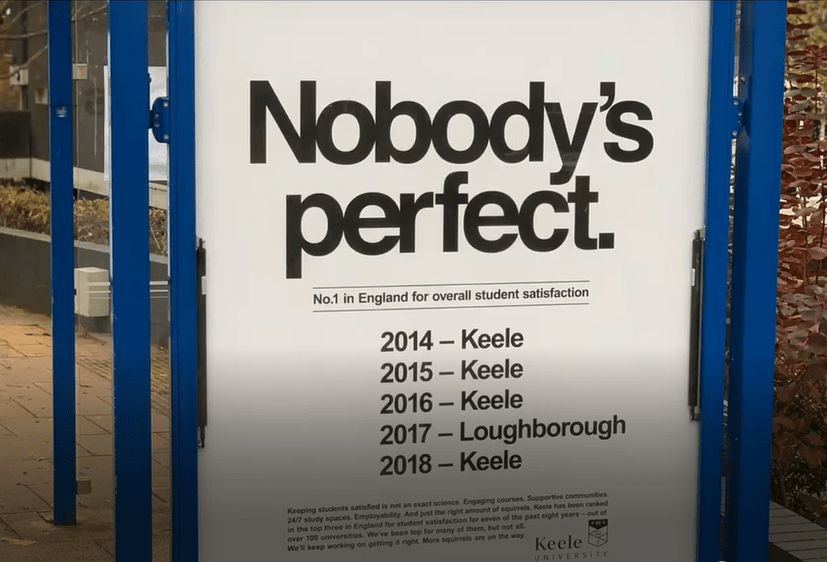Building your university marketing strategy
Assets from webinar held on 15 July 2020
Top tips from The Student Room on how to optimise your strategy and boost student recruitment. Get the recording and key takeaways below.
Watch the webinar recording:
Building your university marketing strategy
Presenters: Lorna Greville (Education Account Director) and Ria O'Sullivan (Director of Marketing and Engagement)

What defines a strategy?
A strategy is the decisions you make about your priorities (aims, objectives and goals) that set the direction for your future actions and tactics. Strategies are not the same as plans; strategies are about decisions, plans offer the detail about the specific actions and steps you'll take based on those decisions. A good basis for a simple strategy should include:
- Aims - the long-term purpose of your marketing efforts e.g. Recruit more postgraduates
- Objectives - the measurable and tangible behaviours e.g. piece of collateral, live event
- Goals - the desired outcome e.g. 1,000 postgraduate applications, 5,000 leads by March 2021
Tips for building your university marketing strategy
- Keep it simple - make sure your strategy is easy for stakeholders to understand and digest. Avoid complicated terminology and assumed knowledge.
- Keep it focused (and brief) - think about what stakeholders need to know and remove superfluous detail. Be clear on your purpose before you start.
- Use templates and existing formats - you don't need to start from scratch: copy existing templates and adapt them for your needs.
- Clarify internal expectations - make sure the format and content of your strategy is consistent with your organisation's style and culture. If you don't know, ask staff to explain or share previous examples. There are no stupid questions.
Covid-19: No-one could have predicted the pandemic. Review your strategy, but don't tear it up. It's likely your objectives might need to be adapted, but the aims and goals you outlined might still be valid. Think about how you can pivot your existing ideas.



Gathering data and information
It's easy to forget that not everyone knows what you do. You know your university incredibly well so use this awareness and understanding to inform your strategy.
- Use internal information first - previous cycle data (e.g. which courses were under/oversubscribed) and previous campaigns: what worked, what didn't?
- Match your success metrics to your target audience's behaviour - e.g. Gen Zs can be influenced, but they aren't clickers
- Focus groups and surveys - use these to help you understand the "whys" behind your previous campaign and cycle data. e.g. decliner surveys - why didn't prospective applicants end up choosing your university?
- Good external sources - HESA, sector publications, Google, existing reports, commissioned research, The Student Room (including bespoke research)
- Assess your current level of awareness marketing - it's an area the HE sector has historically under-invested in
- Use your knowledge of students to connect and tell them something about themselves - Memes, humour, aspirational, relatable e.g. Keele's "Nobody's Perfect" ad was lifted from a 1984 Porsche campaign. It drew attention to their student satisfaction record, positioned themselves against their competition and used humour to engage students
Ideas from outside the HE sector
- Information sources - audience group reports (e.g. Gen Z personas), LinkedIn advertising examples and content
- Stay up-to-date with relevant tools and technology - e.g. cookies are dying out - how will this affect your programmatic advertising next year? Which platforms are applicants using and what is next?
- Look for inspiration in advertising and marketing around you - what inspires you? Save ideas and ads you love. Think about the emotions the ads evoke.
Key stakeholder engagement - don't do it all alone
The HE sector has complicated organisational structures and hierarchies, so you need to be really clear on who plays a role in your strategy development. Keeping stakeholders onside early will save you time and effort by reducing the need for amends to your university marketing strategy later on.
Identify your key influencers and primary stakeholders
Whose opinions matter most/who are the decision-makers? Who will have your corner? Who needs to sign your strategy off? Who do you need support or information from? What information do you need to share to empower stakeholders to approve your strategy?
Buy-in and trust is essential
Be clear and transparent about what you aim to achieve and by when. Explain to stakeholders what you are doing, why you are doing it, what input you need from them and when you need it done by (gain their agreement and trust by asking them how much time they will need). Provide context about how the strategy fits into their personal objectives and the organisation's goals.
Make them part of the journey early
Don't wait until the last minute to get key stakeholder feedback, include them in every relevant stage of the process (don't include them unnecessarily and risk alienating them by wasting their time) . This way you know you have their agreement and they feel involved in the most important decisions.

Key takeaways
- A strategy is not a plan - a strategy is the decisions that impact your later actions, which inform your plan. It's about where you want your future to be.
- Keep it simple and focused - ask the "obvious" or "stupid" questions that allow you to get really clear on what you are doing. This means you'll be able to explain your strategy clearly to others. Identify your aims, objectives and goals.
- Allow enough time - both for you (research, surveys, analysis) and your stakeholders (feedback and amends cycles)
- Look outside HE for inspiration - use all the relevant tools at your disposal, but be focused
- Identify and engage stakeholders early in the process - bring them along the journey and be clear about what you want to achieve and why it matters to the organisation and to them. Get admissions involved - coffee chats are key!
